|

| |
|
|
| |
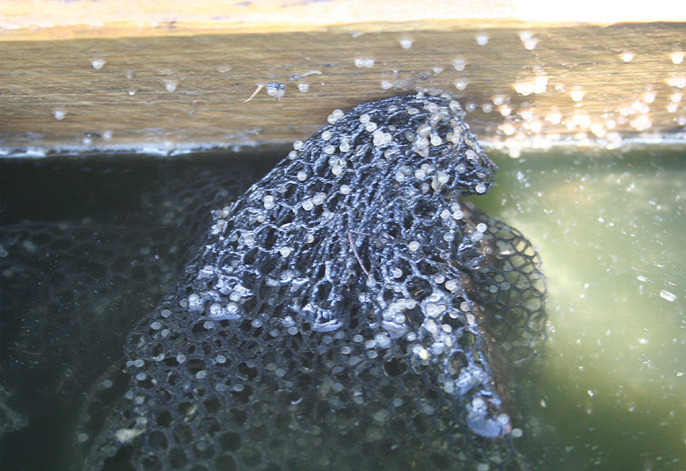 |
|
| |
Having returned last year’s roach and cleaned and prepared the tanks, and having proved that the infrastructure was sound, we placed our slightly modified spawning boards out, with nervous anticipation, in around a dozen different locations. This was the project for real. We simply had to collect spawn or sit with three empty tanks for a year before trying again. Fortunately, at the end of April, we were rewarded with obliging, amorous roach spawning on some of our boards. The down side, however, is that many of the locations failed to produce a single egg, even historically noted areas for roach. Confirmation, if any was needed, of the importance of this project.
|
|
| |
 |
|
| |
|
|
| |
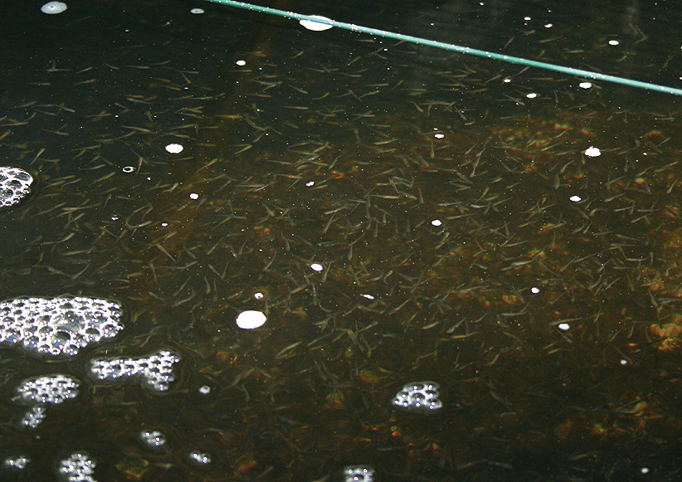 |
|
| |
On 6th May the first hatchlings were spotted in the tanks. The worry of collecting spawn was behind us, the worry of whether we could get them to hatch was behind us, now we just had to keep them alive and get some food inside them. Our artemia hatchery began churning out protein rich brine shrimps and the babies just loved ‘em. And with all those worries behind us, we were struggling for things to worry about next. Budgie began worrying that he had nothing to worry about.
|
|
| |
 |
|
| |
|
|
| |
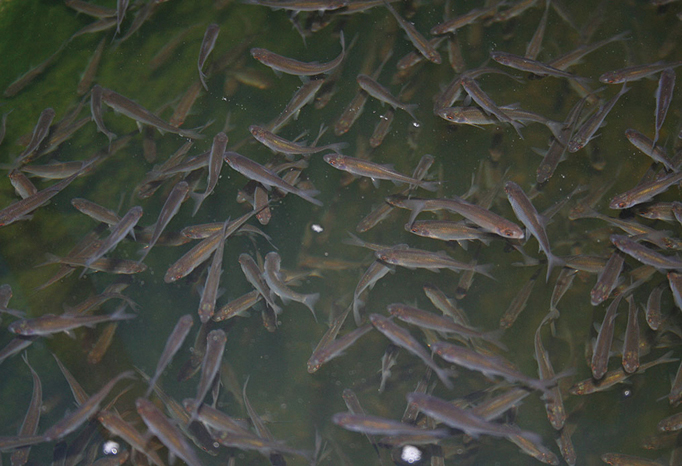 |
|
| |
During the first stages of their lives it is fairly full on, with two feeds of brine shrimp every day. Then it becomes slightly less intensive as they go on to the crumb feed, plus whatever daphnia we can find in the bins and tanks. Filter cleaning and maintenance, and all other roach farming chores become second nature after a while and the rewards are images like this. Thousands and thousands of happy, healthy little red-eyed roach. The fins take on colour later.
|
|
| |
 |
|
| |
|
|
| |
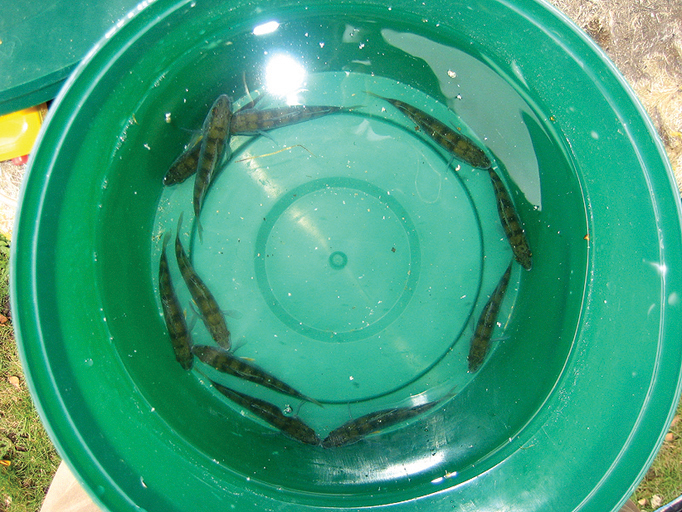 |
|
| |
Unfortunately, some unwanted interlopers hitched a ride on the spawning boards. Along with gammarus and an array of nymphs, we inadvertently transported some perch larvae. We noticed after a couple of months that we had a few really fast growing ‘roach.’ Then we realised something was wrong when they started eating their shoal mates. We tried all kinds of traps to remove them, but in the end it was as simple as dropping the water level, making a safe little cave with cupped hands in a corner of the tank, and the perch simply swam in and were removed.
|
|
| |
 |
|
| |
|
|
| |
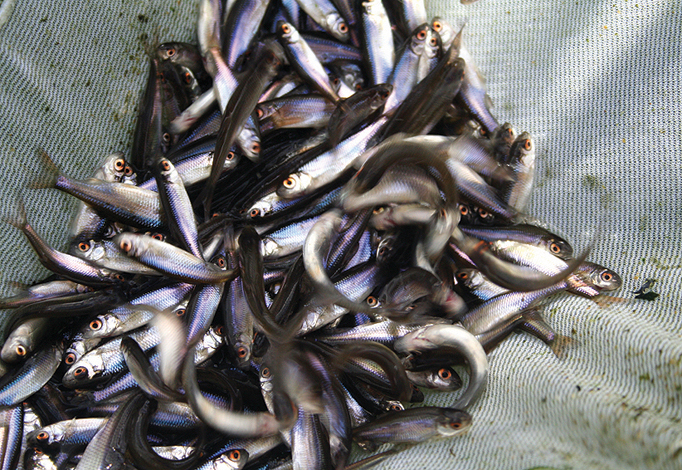 |
|
| |
In March of 2009 we had the rather unpleasant task of selecting thirty little roach to be taken off for the statutory health check required prior to being granted a Section 30 Consent. The Environment Agency were again very helpful and generous. They collected, transported and paid for the health check, which our one year olds passed with flying colours. The Section 30’s were granted and the fish moved from the tanks and transferred to two of the stews we have been given to raise them for a further two years.
|
|
| |
 |
|
| |
|
|
| |
 |
|
| |
This is one of seven stews donated to the project by Longford Estate. Each is about 100 feet long with a good depth, so the ideal temporary home for a good head of our little roach. River keeper Pete Orchard was on hand to help with the clearance work needed to make them all accessible. There is still a lot of work to do, but hopefully the rewards will make every bead of sweat worthwhile, though some of the work was done in some ferociously cold weather. The Longford stews will have to be netted as there is a heronry nearby. The first one has its net, which was generously paid for by Longford, and we are currently trying to raise the money to buy the rest, which will cost around £850.
|
|
| |
 |
|
| |
|
|
| |
 |
|
| |
Christchurch Angling Club have also been extremely generous with the donation of this stew on the banks of the river Crane at Verwood. It is just over 200 feet long, so again ideal for what we require. We have put a small fence around it to discourage otters, not that they would be interested in the fish in the first year or so. It will also discourage mink, which would. In addition to this we have strung lines across and hung CDs from it to deter any terns or kingfishers that might fancy a roachy mouthful.
|
|
| |
 |
|
| |
|
|
| |
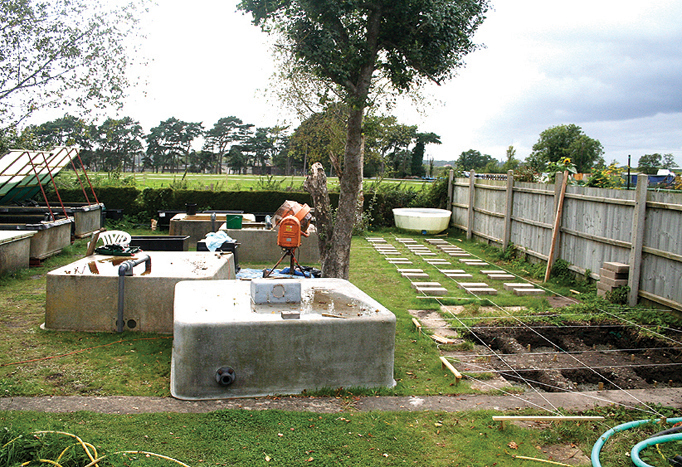 |
|
| |
Having redistributed seven tonnes (carrier bags full) of compost heap to accommodate the third tank we agreed that that was it. Three tanks was enough. Then we became aware that the EA had a number of tanks, in an out building nearby, that they might let us have, and before we could say ‘no thanks, we’ve agreed that three is enough,’ there were a further four sitting in the garden waiting for the ground to be prepared for them.
|
|
| |
 |
|
| |
|
|
| |
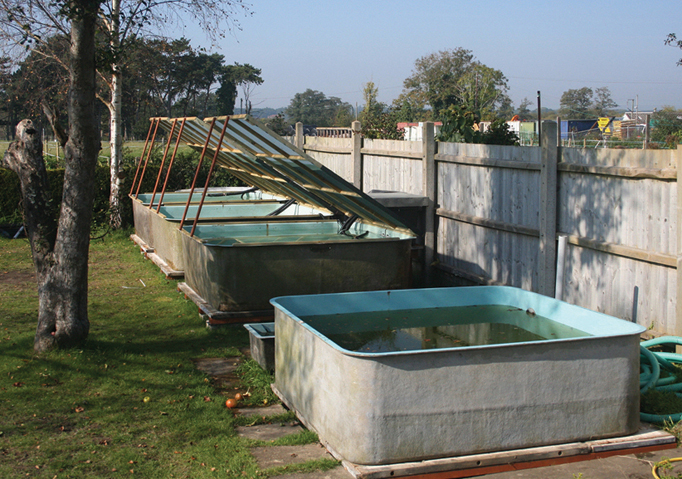 |
|
| |
The first three tanks were set on plinths of slightly different levels with interconnecting pipes so water is pumped from the bottom tank up into a filter with an outlet into the top tank. This then runs into the middle and then the bottom. We realised this would have to be changed and the tanks separated as, should we have problems with disease, all the tanks would be affected and we would be unable to isolate it. The new tanks were set in position and would be run as separate units. We now had six tanks, three full of roach fry, three ready to take spawn the following spring and the seventh for growing daphnia to feed them all on. We vowed this would be the limit.
|
|
| |
 |
|
| |
|
|
| |
 |
|
| |
To be honest, little persuasion was needed to get us to take two additional, larger, tanks from the EA, set them in the space between the two rows of three and use them to attempt to grow our own adults right here at Project HQ. The EA were again extremely generous and even delivered them and dropped them over the hedge and into the front garden for us.
|
|
| |
 |
|
| |
|
|
| |
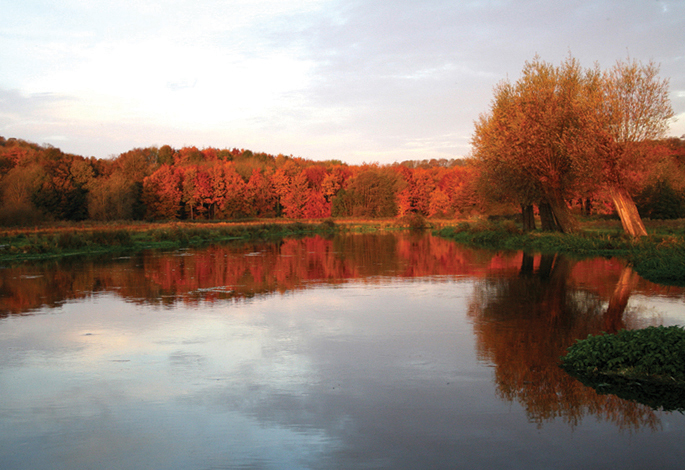 |
|
| |
This is what it’s all about. F.W.K.Wallis once wrote in the Nottingham Gazette ‘The Avon is the best preserved river in England and that the head of fish it contains is phenomenal.’ The river is now perhaps as well known for its quiet cries for help. Our view is that in this world of forward thinking and looking perhaps some of the standards on which we should set our sights are those of the past.
|
|
| |
 |
|
| |
|
|
| |
 |
|
|
| |
|
|

